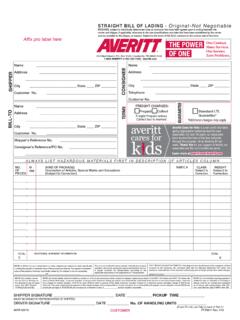Transcription of First Grade Baseline eva l u atoi n - ed
1 The First Grade Baseline Evaluation is an optional tool that can be used at the beginning of the school year to help teachers get to know the reading and language skills of each student. The evaluation is composed of seven screenings. Teachers may use the entire evaluation or choose to use those individual screenings that they find most beneficial for their students. The information can aid teachers in planning instruction that will meet the needs of each First Grade Baseline Evaluation is designed to be given individually to students. It can be used to provide a Baseline of a student s reading skills at the beginning of the school year. Because the assessed skills will continue to develop over time, this evaluation may be used multiple times throughout the year to monitor progress. This will allow a teacher to tailor instruction most First Grade Baseline Evaluation addresses skills based on Indiana s Academic Standards Grade 1.
2 The evaluation covers skills in: Letter Identification Dictation Letter Sound Identification Reading Comprehension Phonemic Awareness Listening Comprehension Sight Word Identification The First Grade Baseline Evaluation is not intended to show mastery of standards. Day-to-day observations of students in conjunction with direct assessments should be used to determine mastery of standards. The First Grade Baseline Evaluation is not intended to identify students for special education services. The results of the First Grade Baseline Evaluation may identify students who exhibit extreme difficulty with certain tasks or who display performance far beyond what is expected for their age. These students may require further monitoring or who would like to assess their students' skills in reading and math may wish to use the First Grade r s t Gr a d eBa s e l i n e ev a l u a t i o n2 Recording Sheet First Grade Baseline Evaluation Center for Innovation in AssessmentHow to Administer the Screening[ ]Screening 1 (Letter Identification) and Screening 2 (Sound Identification) are combined on the recording sheets to simplify the administration of the and Sound IdentificationShow the student the Letter and Sound Identification: Student Form A.
3 Use a sheet of paper to cover all the letters except those in the First to each : What letter is this? What sound does it make?Mark the student s response under the corresponding letter on the Letter and Sound Identification Recording Sheet. Continue the rest of the assessment in the same manner, moving the sheet of paper below each line to be named, and recording each response on the recording sheet. If a letter has more than one sound, accept any correct sound for the letter. You may want to record the answer for later the student states a letter or sound incorrectly, write the letter or sound the student states under the the student has completed the Letter and Sound Identification: Student Form A, continue the screening using the Letter Identification: Student Form B to assess lowercase letter : What letter is this?
4 Mark the student response under the corresponding letter on the Letter and Sound Identification Recording Students: If the student is unable to name the letters in the First row, prompt him/her to identify specific letters. If the student is still struggling, show the student letters from his/her name to identify. You may also want to ask if he/she knows any letter sounds. Stop the Letter and Sound Identification screenings if the student is frustrated, unsuccessful, or appears not to know any letters or letter sounds. 3 Recording Sheet First Grade Baseline Evaluation Center for Innovation in AssessmentLetter and Sound IdentificationScreenings1&2 Recording Sheet A [ ]Date _____ Optional Retest Date _____ Optional Retest Date _____ Letter Sound Letter Sound Letter Sound Letter SoundOPTIONAL RETESTS Letter Sound Letter Sound Letter Sound Letter SoundOPTIONAL RETESTS Letter Sound Letter Sound Letter Sound Letter SoundOPTIONAL RETESTS Letter Sound Letter SoundOPTIONAL RETESTS Letter Sound Letter SoundOPTIONAL RETESTS Letter Sound Letter SoundOPTIONAL RETESTS Letter Sound Letter Sound Letter Sound Letter SoundOPTIONAL RETESTS Letter Sound Letter Sound Letter Sound Letter Sound Letter Sound Letter Sound Letter Sound Letter Sound Letter Sound Letter Sound Letter Sound Letter Sound Letter Sound Letter Sound Letter Sound Letter Sound Letter Sound Letter
5 Sound Letter Sound Letter Sound Letter Sound Letter Sound Letter Sound Letter Sound Letter Sound Letter Sound Letter Sound Letter Sound Letter Sound Letter Sound Letter Sound Letter Sound Letter Sound Letter Sound Letter Sound Letter Sound Letter Sound Letter Sound Letter Sound Letter Sound Letter Sound Letter Sound Letter Sound Letter Sound Letter Sound Letter Sound Letter Sound Letter Sound Letter SoundOPTIONAL RETESTS Letter Sound Letter Sound Letter SoundOPTIONAL RETESTS Letter Sound Letter SoundOPTIONAL RETESTS Letter Sound Letter SoundOPTIONAL RETESTSOPTIONAL RETESTSOPTIONAL RETESTSOPTIONAL RETESTSOPTIONAL RETESTSOPTIONAL RETESTSOPTIONAL RETESTSOPTIONAL RETESTSOPTIONAL RETESTSOPTIONAL RETESTSOPTIONAL RETESTS1 OPTIONAL RETESTSOPTIONAL RETESTSOPTIONAL RETESTSOPTIONAL RETESTSOPTIONAL RETESTSK M P S TV Z A B FG I J L NO Q R Y CD E H U W XLetter and Sound IdentificationScreenings1&24 Recording Sheet First Grade Baseline Evaluation Center for Innovation in AssessmentRecording Sheet B [ ]
6 Letter Identification total /52 Optional Retest /52 Optional Retest /52 Sound Identification total /26 Optional Retest /26 Optional Retest /26 Letter Letter Letter Letter Letter Letter Letter Letter Letter Letter Letter Letter Letter LetterOPTIONAL RETESTSOPTIONAL RETESTSOPTIONAL RETESTSOPTIONAL RETESTS Letter Letter Letter Letter Letter Letter Letter Letter Letter Letter Letter Letter Letter Letter Letter Letter Letter Letter Letter Letter Letter Letter Letter Letter Letter Letter Letter Letter Letter Letter Letter Letter Letter Letter Letter Letter Letter Letter Letter Letter Letter Letter Letter Letter Letter Letter Letter Letter Letter Letter Letter Letter Letter Letter Letter Letter Letter Letter Letter Letter Letter Letter Letter LetterOPTIONAL RETESTSOPTIONAL RETESTSOPTIONAL RETESTSOPTIONAL RETESTSOPTIONAL RETESTSOPTIONAL RETESTSOPTIONAL RETESTSOPTIONAL RETESTSOPTIONAL RETESTSOPTIONAL RETESTSOPTIONAL RETESTSOPTIONAL RETESTSOPTIONAL RETESTSOPTIONAL RETESTSOPTIONAL RETESTSOPTIONAL RETESTSOPTIONAL RETESTSOPTIONAL RETESTSOPTIONAL RETESTSOPTIONAL RETESTSOPTIONAL RETESTSOPTIONAL RETESTSk m p s tv z a b fg i j l no q r y cd e h u w xLetter and
7 Sound IdentificationScreenings1&25 Recording Sheet First Grade Baseline Evaluation Center for Innovation in AssessmentHow to Administer the ScreeningThe Phonemic Awareness screening is composed of five parts: Beginning Sounds, Rhyming, Syllables, Sound Segmentation, and Phoneme Blending. The screening should be done with the student in close proximity to the teacher so that all words can be clearly heard. Directions for each part are located below. Beginning Sounds Say: You are going to listen to the beginning sounds in words. Ball, baby, and bell start with the same beginning sound of /b/. Basket is another word that starts with /b/. 1. [ ] Say: man, march, more Tell me another word that starts with the same beginning sound as these words. Comments: 2. [ ] Say: door, dog, dance Tell me another word that starts with the same beginning sound as these words.
8 Comments: 3. [ ] Say: girl, goat, good Tell me another word that starts with the same beginning sound as these words. Comments: yes noOPTIONAL RETESTS yes no yes no yes noOPTIONAL RETESTS yes no yes no yes noOPTIONAL RETESTS yes no yes noDate _____ Optional Retest Date _____ Optional Retest Date _____Rhyming Say: You are going to listen to rhyming words and tell me another rhyming word. Tree and bee rhyme. Another word that rhymes with tree and bee is we. 4. [ ] Say: Book and hook rhyme. Tell me another word that rhymes with book and hook. Comments: 5. [ ] Say: Train and cane rhyme. Tell me another word that rhymes with train and cane. Comments: 6. [ ] Say: Sip and kip rhyme. Tell me another word that rhymes with sip and kip. Comments: yes noOPTIONAL RETESTS yes no yes no yes noOPTIONAL RETESTS yes no yes no yes noOPTIONAL RETESTS yes no yes noCorrectPhonemic AwarenessScreening36 Recording Sheet First Grade Baseline Evaluation Center for Innovation in AssessmentSyllables Say: You are going to listen to words and count the syllables or word parts.
9 The word sandal has two syllables: san dal. 7. [ ] Say: How many syllables do you hear in the word flower? 2 Comments: 8. [ ] Say: How many syllables do you hear in the word computer? 3 Comments: 9. [ ] Say: How many syllables do you hear in the word elephant? 3 Comments: yes noOPTIONAL RETESTSC orrect yes no yes no yes noOPTIONAL RETESTS yes no yes no yes noOPTIONAL RETESTS yes no yes noSound Segmentation Say: You are going to listen to words and tell me the sounds you hear. The sounds you hear in the word dog are /d/ / / /g/. 10. [ ] Say: Tell me each sound you hear in the word phone. /f/ /o/ /n/ Comments: 11. [ ] Say: Tell me each sound you hear in the word slip. /s/ /l/ /i/ /p/ Comments: 12. [ ] Say: Tell me each sound you hear in the word leaf.
10 /l/ /e/ /f/ Comments: yes noOPTIONAL RETESTS yes no yes no yes noOPTIONAL RETESTS yes no yes no yes noOPTIONAL RETESTS yes no yes noPhonemic AwarenessScreening37 Recording Sheet First Grade Baseline Evaluation Center for Innovation in AssessmentPhonemic AwarenessScreening38 Recording Sheet First Grade Baseline Evaluation Center for Innovation in AssessmentPhoneme Blending Say: You are going to listen to sounds and blend the sounds together to make a word. 13. [ ] Say: /m/ / / /p/ What word is this? map Comments: 14. [ ] Say: /k/ / / /t/ What word is this? kite Comments: 15. [ ] Say: /w/ / / /l/ What word is this? well Comments: yes noOPTIONAL RETESTSC orrect yes no yes no yes noOPTIONAL RETESTS yes no yes no yes noOPTIONAL RETESTS yes no yes noPhonemic Awareness total /15 Optional Retest /15 Optional Retest /15 How to Administer the ScreeningHave the student read the list of sight words.














